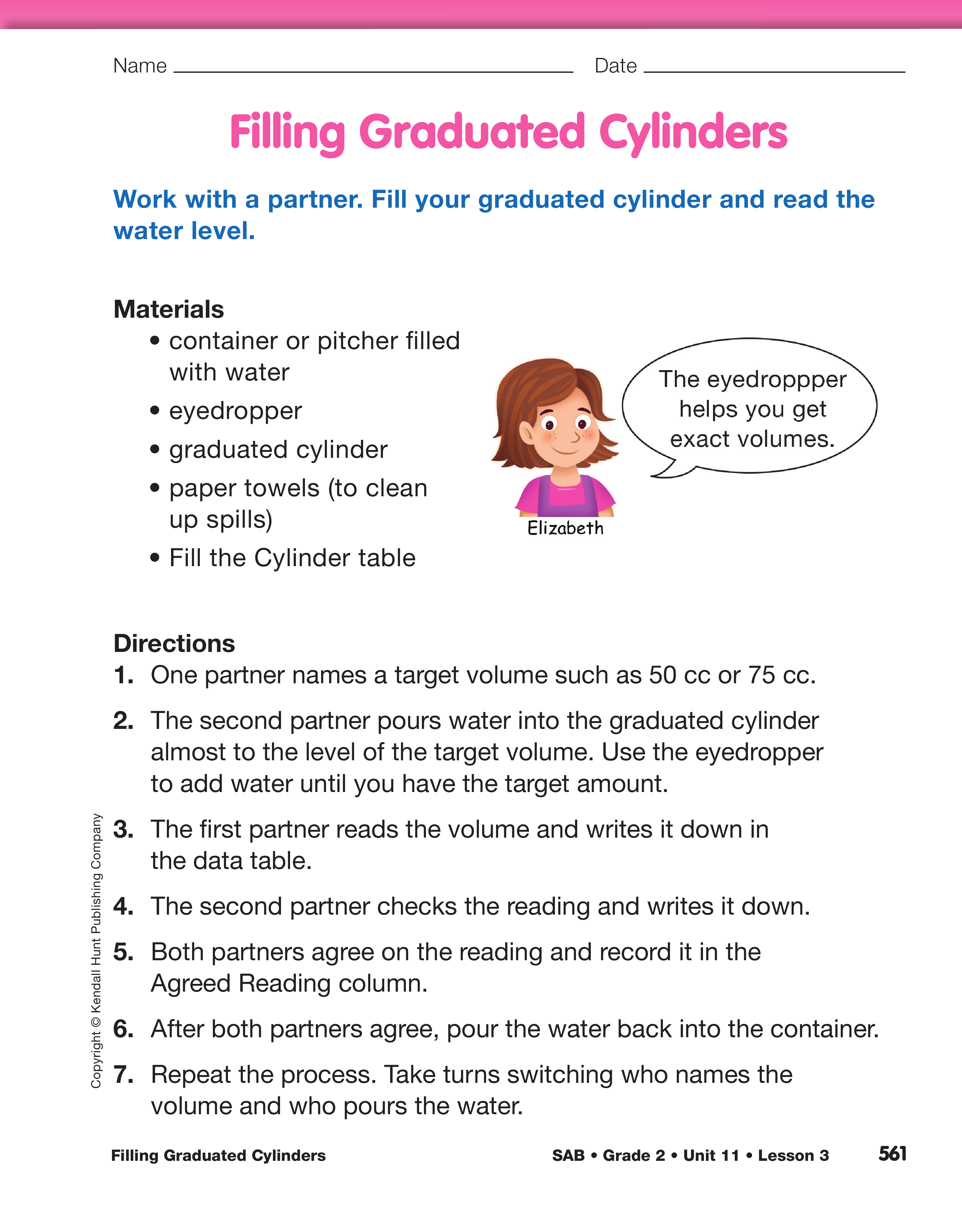Filling Graduated Cylinders
Est. Class Sessions: 1Developing the Lesson
Review Reading Graduated Cylinders. Display the Looking at the Graduated Cylinder Master from Lesson 2 to review concepts learned about reading graduated cylinders. Also discuss the important points to remember when reading a graduated cylinder by reviewing the tip chart made in Lesson 2. Ask volunteers to demonstrate how to read the two graduated cylinders you prepared.
Demonstrate How to Fill a Graduated Cylinder. Using an empty graduated cylinder, demonstrate how to fill it to a specified level. Ask a student volunteer to be your partner and reader as you demonstrate how to fill a graduated cylinder.
Say to the class:
Place the cylinder on a level surface and pour the water into the cylinder and stop at just below 50 cc.
Ask your partner:
Next use an eyedropper to raise the water gradually to the desired level. Ask your partner to read the meniscus at eye level, as you also do the same, to make sure the water is at 50 cc. Compare readings aloud.
When you and your partner agree that the cylinder is filled to 50 cc, ask:
Fill Graduated Cylinders. Display the Filling Graduated Cylinders pages in the Student Activity Book as students look at their own copies. Review the materials and directions, and demonstrate how to record a volume on the chart. Make sure students understand the directions for the activity. Students play different roles depending on whose turn it is. Have them complete the activity, recording their volumes on their charts. Remind them about labeling their answers with the correct unit, either cc or cubic centimeters.
Circulate about the room as students are working to observe their abilities to fill the cylinders accurately. Partners' readings may vary but should be close if not the same. Filling the cylinder to an exact starting volume is a necessary skill to determine volume by displacement, which students will do in Lesson 4.

















